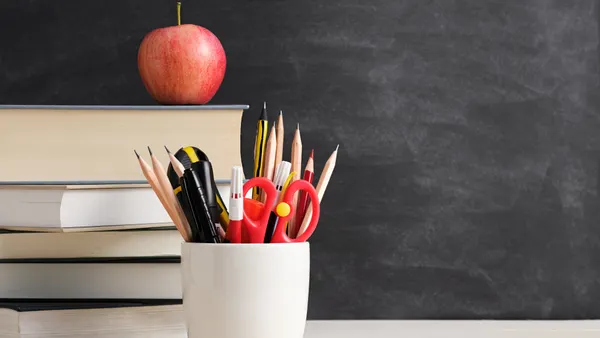Dive Brief:
- The stress children are experiencing from the pandemic can impact their mental and physical states, writes Lori Desautels for Edutopia. The assistant professor at Butler University’s College of Education provides 10 regulatory activities that can help calm students while also boosting their thinking and learning skills.
- Many of the activities are physical and include having students move their arms and hands while simultaneously focusing on breathing, designed to spark their nervous system and increase blood to the brain.
- Other activities include writing something down to share, bringing up a concern with a friend, or adopting a modified show-and-tell game by slowly revealing an object with each breath, as peers guess what they’re seeing.
Dive Insight:
Children need breaks during the school day, such as recess, which the American Academy of Pediatrics has deemed a “crucial and necessary component of a child’s development” that should not be overlooked. In fact, the AAP believes recess can help to boost “cognitive performance” for children and should not be withheld for punitive or academic reasons.
However, recess can be difficult to schedule for students who are attending school remotely and complicated for in-person learning because of social distancing requirements. Nonetheless, whether students are in a classroom setting or learning from home, without breaks, children may not be able to maintain the concentration they need to focus on their work, according to the Harvard Medical School.
Even the Centers for Disease Control and Prevention weighs in on the importance of recess or breaks for K-12 students, noting how they not only serve students who may be flagging midday, but also help them stay focused when they return to the classroom.
Educators may then want to consider working scheduled breaks into the day that get children moving. Teachers can add physical activities into lesson plans, whether that’s a poetry nature walk outside or even yoga exercises on video. These options offer students downtime and a chance to recharge so they can get back to learning, experts say.





 Dive Awards
Dive Awards



